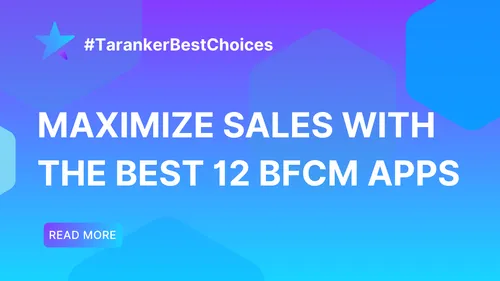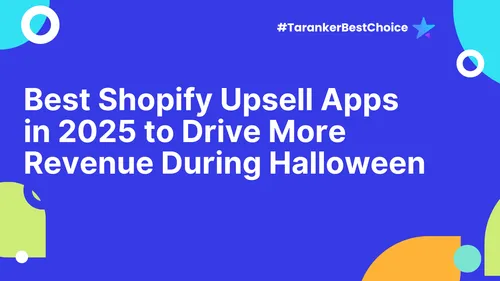Ever wondered how top-rated eCommerce giants like Walmart and Shopify deliver fast and seamless user experiences? The secret behind such experiences is the use of React for web development.
Among all JavaScript libraries, React is the most widely used library that powers around 4.8% of worldwide websites. Yes, that’s true! However, acing the correct way to implement this JavaScript framework is what determines the success of your website.
Ready to leverage React for eCommerce website or app development? This article will discuss the vital tips for creating high-performing solutions with React. Let’s dive in!
Reasons to Choose React for eCommerce
Has the thought of creating an eCommerce website in React JS crossed your mind? Continue reading to know the most convincing reasons why you should choose this JavaScript framework for it.
Reusable Components
The component-based structure of React facilitates developers to create reusable elements such as shopping carts and product cards. Resultantly, you can expect efficient development of websites as well as consistent user experience.
Speed and Performance
![]()
The present widespread requirement for fast and high-performing eCommerce sites cannot be ignored. React applications make use of a virtual DOM, which enables updating changes sans refreshing the entire page. Thus, you can be sure of having enhanced performance and speed in your app. It helps lower bounce rates, ensures quick loading times, and boosts customer engagement & loyalty.
Seamless User Experience
Every website aims to deliver exceptional experiences to its users. And that’s where the implementation of React for eCommerce websites stands as the most suitable choice. The engaging and dynamic interfaces of React work best for eCommerce applications. Besides, the accelerated loading speed, intuitive navigation, and optimized checkout experiences contribute to seamless user experiences for consumers.
Scalability
React JS is capable of effectively supporting high-traffic and complex applications. As a result, it proves to be ideal for eCommerce platforms that want to scale as their user base grows.
SEO-Friendliness
The importance of SEO for eCommerce platforms cannot be overlooked in this competitive online landscape. However, if you are using React for eCommerce app development, you can rest assured of improved SEO.
Wondering how? By allowing server-side rendering with Next JS, React helps enhance SEO and enables your online store to rank higher on the search engine result page.

Tips to Build High-Performant Solutions Using React
Want to develop a React eCommerce app but confused about how to get started? Read on to learn the crucial tips for creating high-performing eCommerce applications using React.
Use Server-Side Rendering
The eCommerce sector is becoming more and more competitive these days. Therefore, standing out in the crowd and remaining at the top of the search engine result page seems challenging. However, using React JS with Next JS can help overcome such issues.
Next JS enables server-side rendering in React applications. It can render content on the server before it is sent to the users. As a result, search engines can access pages easily and quickly, leading to improved rankings and better visibility. Besides, the application of Next JS helps in pre-rendering pages for React eCommerce applications and improves load time. This can majorly enhance the user experience.

Leverage the React.lazy Function
Visitors don’t like to wait for more than 3 seconds for a website to load. For that reason, if your eCommerce website has a longer load time, there is a high chance of consumers leaving or abandoning the site. That, eventually, leads to increased bounce rates. This is where the usage of React.lazy function can be ideal when implementing React for eCommerce apps.
The React.lazy function loads React components ‘lazily’ through code splitting while requiring no additional libraries. It ascertains that the content visible on the users’ screen is loaded initially while the remaining content gets loaded as they scroll downwards. Resultantly, overall website performance optimization combined with reduced bounce rates becomes possible through this approach.
Optimize the Checkout Process
Customers experience major frustration when they encounter complicated checkout processes that take a long time to complete. Hence, it is crucial to offer an easy and simple checkout process. That is exactly what React helps with.
The checkout process can be streamlined by implementing key React features such as guest checkout options, one-page checkout, and progress indicators. Besides, using the component-driven architecture of React helps make such implementations simple and easy. It allows better checkout flow and ascertains quick updates sans any difficulties.
Implement State Management Libraries
Do you wish to manage the React eCommerce app state across different components? If yes, consider the implementation of a state management library. Among the numerous libraries available, choose a state management solution that best meets your application needs.
For instance, Redux Toolkit makes a great choice if you wish to handle a complex global state. Meanwhile, Recoil is a good library for efficient and lightweight state management. Besides, React Context API is the most appropriate solution to handle small-scale state management requirements.
Integrate with APIs and eCommerce Tools
When using React for eCommerce applications, you might have to depend on numerous third-party tools. The development requires the integration of CRM systems in addition to inventory management tools and payment gateways. Through React JS, you can conveniently integrate with different APIs, enabling seamless interactions with the back-end systems.
By integrating tools like WooCommerce and Shopify, React eCommerce apps allow businesses to manage everything from order processing and payments to dropshipping management on a single platform. As a result, it helps streamline operations and enhance the efficiency of eCommerce sites.
Use Analytics for Effective Tracking
Monitoring user behavior allows businesses to make essential changes and enhance outcomes. React eCommerce apps can successfully integrate with tools like Mixpanel and Google Analytics to analyze user interactions with your site.
By using this approach, you have access to essential data that includes page views, bounce rates, and drop-off points during the checkout process. You can use these insights to develop strategic plans, optimize pages, and make changes that are necessary to increase customer conversions as well as retain them.
Leverage PWA Features
As React JS supports PWA or Progressive Web App capabilities, you can develop eCommerce sites that provide native app-like experiences on the web. PWAs offer quick loading times, enhanced mobile app performance, and offline capabilities. Resultantly, you can deliver the best experience to shoppers and drive them to your site more often.
Ensure Optimum Security
Cybersecurity incidents have been on the rise. Therefore, online shoppers view data security as their primary concern when it comes to making purchases on the web. For that reason, the development of eCommerce applications using React demands a complete focus on best security practices.
The security of user sessions can increase through the implementation of JWT Authentication. Moreover, you should activate bot protection alongside rate-limiting measures to stop hackers from gaining unauthorized access to sensitive customer data or prevent potential data abuse.
Conclusion
The eCommerce sector is rapidly evolving and demands the adoption of the latest advancements to thrive in the competition. React JS provides the perfect foundation to create high-performing and scalable eCommerce applications.
Now that you have an idea of how to use React to gain the best outcomes, it is time to team up with experts and work on an effective eCommerce product development strategy.
Want to leverage print-on-demand products and boost your eCommerce success? Discover the best solutions on Taranker.















